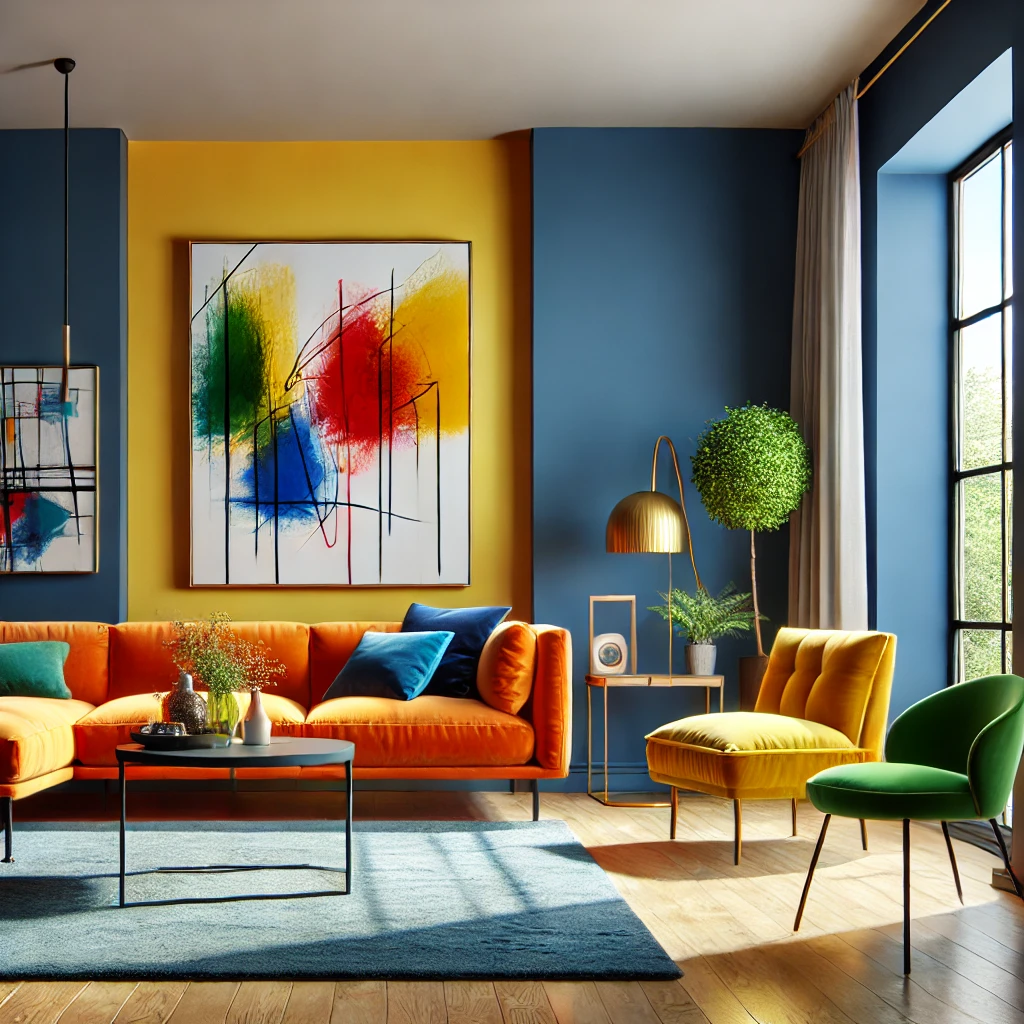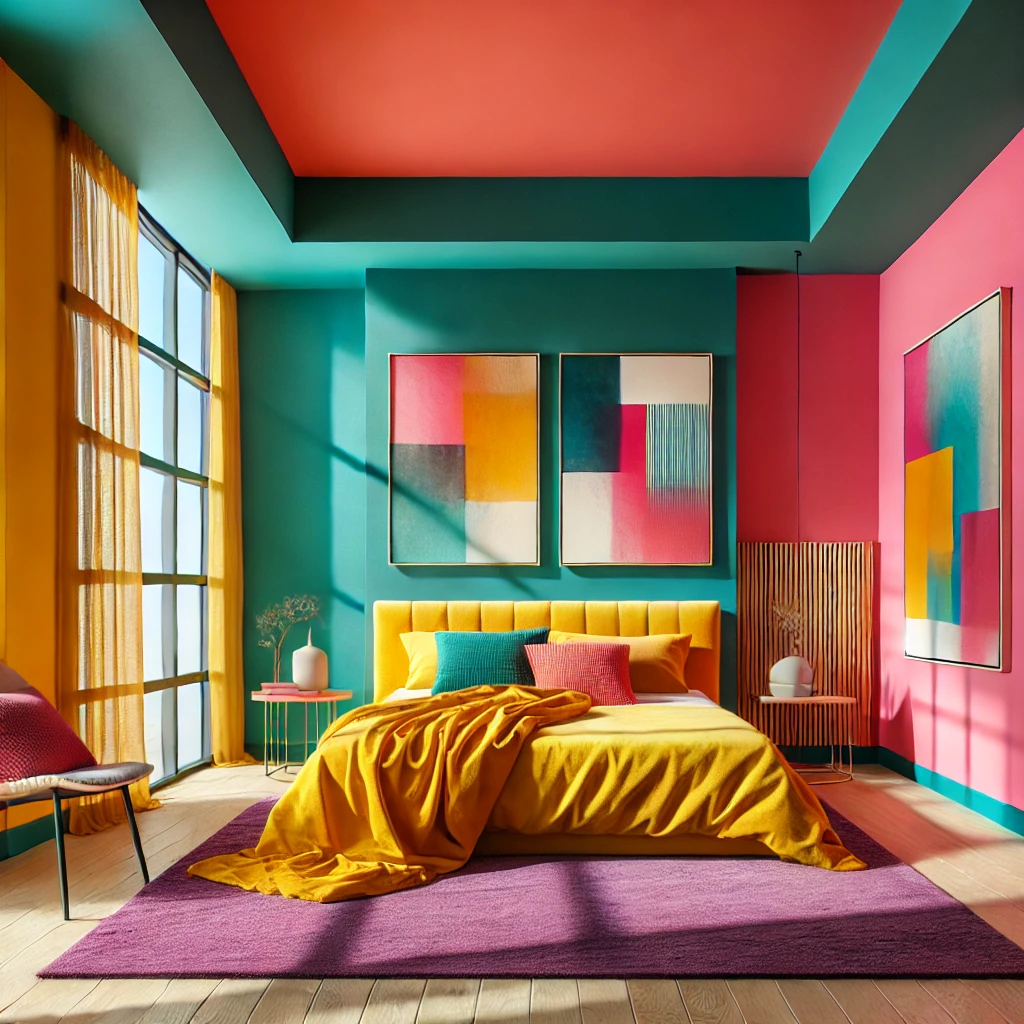
Choosing the right paint color for a room can transform its look and feel. Whether you’re aiming for a cozy retreat, an energizing workspace, or a welcoming living area, color plays a crucial role in setting the mood. Here’s how to select the best paint colors for every room in your home.
1. Understand Color Psychology
Different colors evoke different emotions. Understanding the psychology of color can help you decide what mood you want to create in each room. Colors are powerful tools that influence feelings and perceptions. For instance, blue is often associated with calmness and tranquility, making it ideal for bedrooms and bathrooms where relaxation is key. On the other hand, red is an intense, stimulating color that can create excitement and warmth, making it a great choice for dining rooms or spaces meant for social gatherings. Green symbolizes balance and freshness, perfect for living rooms and kitchens. Yellow exudes cheerfulness and energy, which works well in kitchens, sunrooms, and play areas. Gray provides a sophisticated and neutral backdrop, fitting almost any space while adding a touch of modernity. Lastly, white is classic and airy, making spaces feel bigger and brighter. By aligning color choices with psychological effects, you can create rooms that serve their intended emotional and functional purpose.
- Blue – Calming and serene, great for bedrooms and bathrooms.
- Red – Stimulating and passionate, ideal for dining rooms and accent walls.
- Green – Refreshing and balanced, perfect for living rooms and kitchens.
- Yellow – Cheerful and warm, suitable for kitchens and sunrooms.
- Gray – Neutral and sophisticated, works well in almost any room.
- White – Clean and airy, enhances space and light.
2. Consider the Room’s Purpose
Think about how the room will be used before selecting a paint color. If the room is a bedroom, opt for soft, calming hues like light blues, greens, or neutrals, as they help promote relaxation and sleep. A home office benefits from productivity-boosting colors like muted greens, soft blues, or earthy tones that encourage focus without overwhelming the senses. In contrast, dining rooms and entertainment areas can handle bolder colors such as deep reds, warm oranges, or jewel tones that create an inviting and energetic atmosphere. Bathrooms often benefit from light, spa-like colors like soft grays, pastels, or seafoam greens, making them feel fresh and serene. Kitchens thrive with bright and welcoming colors like yellow or warm neutrals, which promote energy and conversation. By selecting a color that aligns with the function of the space, you can enhance its usability and ambiance for the people who use it most.
3. Take Lighting into Account
Lighting plays a crucial role in how colors appear. Natural and artificial light sources affect how a shade is perceived, which is why it’s essential to test colors in different lighting conditions before committing. A color that looks perfect under artificial light might seem entirely different in natural daylight. For example, in north-facing rooms, cooler light can make colors appear muted, so warmer tones work best to add warmth and brightness. South-facing rooms receive abundant light throughout the day, enhancing most colors but making overly bright hues overwhelming. East-facing rooms have warm morning light but shift to cooler tones in the afternoon, so choosing colors that look good in both warm and cool conditions is wise. West-facing rooms benefit from dramatic evening light, making warm tones glow beautifully while cooler colors might look dull. Keeping these factors in mind ensures your chosen paint color looks consistent and attractive throughout the day.
4. Test Paint Samples
Never commit to a paint color based solely on a swatch or a digital sample. Colors can appear drastically different when painted on an actual wall due to lighting, texture, and surrounding decor. The best way to ensure satisfaction with your choice is to buy small sample pots of the colors you’re considering and apply them to different areas of the room. Paint large swatches on various walls and observe them at different times of the day, as colors shift based on daylight, shadows, and artificial lighting. Pay attention to how the color interacts with your furniture, flooring, and natural surroundings. If you’re testing multiple shades, label them clearly to avoid confusion. Taking the time to test samples prevents costly mistakes and ensures you’ll be happy with your selection in the long run. When in doubt, consider choosing a slightly lighter shade, as colors often appear darker once applied to a full wall.
5. Coordinate with Furniture and Decor
Your paint color should complement, not clash with, your existing furniture and decor. Before choosing a shade, take stock of the dominant colors in your furniture, rugs, artwork, and accessories. If your room already has bold or colorful furnishings, opt for neutral walls like whites, grays, or beiges to create balance. Conversely, if your furniture and decor are primarily neutral, you can experiment with a statement wall or a rich color to add character and depth. Patterns and textures also play a role – if your space features intricate patterns, stick to simple, complementary wall colors to avoid visual overload. Another approach is using color theory to create harmony. For example, pairing complementary colors (opposite on the color wheel) can create a vibrant contrast, while analogous colors (adjacent on the wheel) create a more soothing effect. Thoughtful coordination ensures that your paint choice enhances your space rather than competes with it.
6. Consider the Flow Between Rooms
If you have an open floor plan or adjacent rooms that connect, consider how colors transition between spaces. A well-planned color scheme should allow for smooth, harmonious transitions. Using a common palette with slight variations in shades helps maintain consistency while still adding interest. For example, if your main living area is painted in a neutral taupe, you could use a slightly darker or lighter variation of the same color in adjoining spaces to create cohesion. Accent colors should also be carefully considered – using a consistent accent shade throughout different rooms can tie the whole house together. Another strategy is to create a subtle gradient effect by selecting colors that belong to the same color family but differ in intensity. Ensuring color harmony throughout your home enhances the overall aesthetic, making spaces feel more intentional and connected rather than disjointed or random.

7. Don’t Ignore the Ceiling
Many people default to painting their ceilings white, but incorporating subtle color can add unexpected depth and dimension to a room. White ceilings can make a room feel higher and more open, especially in smaller spaces. However, if you want to add coziness and character, consider using a softer hue like pale blue, light gray, or warm beige. These shades can create an inviting atmosphere without overwhelming the space. For a bold statement, darker ceilings add drama and intimacy, especially in dining rooms, libraries, or cozy sitting areas. If you’re unsure, a good rule of thumb is to choose a ceiling color that’s a lighter version of the wall color. This approach creates a cohesive look while maintaining an open, airy feel. Experimenting with ceiling colors allows for creative expression and can dramatically influence the perception of height and depth in a room.
8. Think About Finish
The paint finish impacts both aesthetics and durability. Different finishes serve different purposes, affecting how a color appears and how well it holds up over time. Here’s a quick guide:
| Finish | Best For |
|---|---|
| Matte | Low-traffic areas, ceilings |
| Eggshell | Living rooms, bedrooms |
| Satin | Kitchens, bathrooms, high-traffic areas |
| Semi-gloss | Trim, doors, cabinets |
| Gloss | Accents, furniture |
Each finish has unique benefits. Matte offers a smooth, non-reflective look, ideal for creating a modern, sophisticated feel. Eggshell adds slight durability without excessive shine. Satin is excellent for areas requiring easy cleaning, like kitchens and bathrooms. Semi-gloss and gloss finishes provide durability and moisture resistance, making them perfect for high-touch surfaces.
9. Follow Trends Sparingly
Trendy colors come and go quickly, and what looks stylish today may feel outdated in just a few years. If you love a trending shade, consider using it in ways that are easy to change, such as throw pillows, rugs, or wall art, rather than committing to an entire wall or room. For long-term satisfaction, opt for classic, timeless hues that will remain stylish and versatile through changing trends. Neutral shades like whites, grays, and beiges provide a strong foundation that can be refreshed with accent colors over time. If you’re drawn to bold trends, use them strategically – perhaps in a statement wall that you can easily repaint when tastes shift. Keeping the balance between trendy and timeless ensures that your home remains fresh and stylish without requiring frequent overhauls.
10. Trust Your Instincts
While design principles and expert advice are helpful, the most important factor is how a color makes you feel in your own space. You’re the one who will live with the color daily, so it should reflect your personality, tastes, and comfort level. If a shade speaks to you and makes you feel good, it’s likely the right choice, even if it’s unconventional. Take your time to experiment with samples and trust your instincts over fleeting trends or what others say is “right.” At the end of the day, your home should be a space where you feel at ease and inspired, so choose colors that bring you joy and create the atmosphere you desire.
For further reading on color psychology, visit Wikipedia. If you’re interested in design principles, check out this article.

